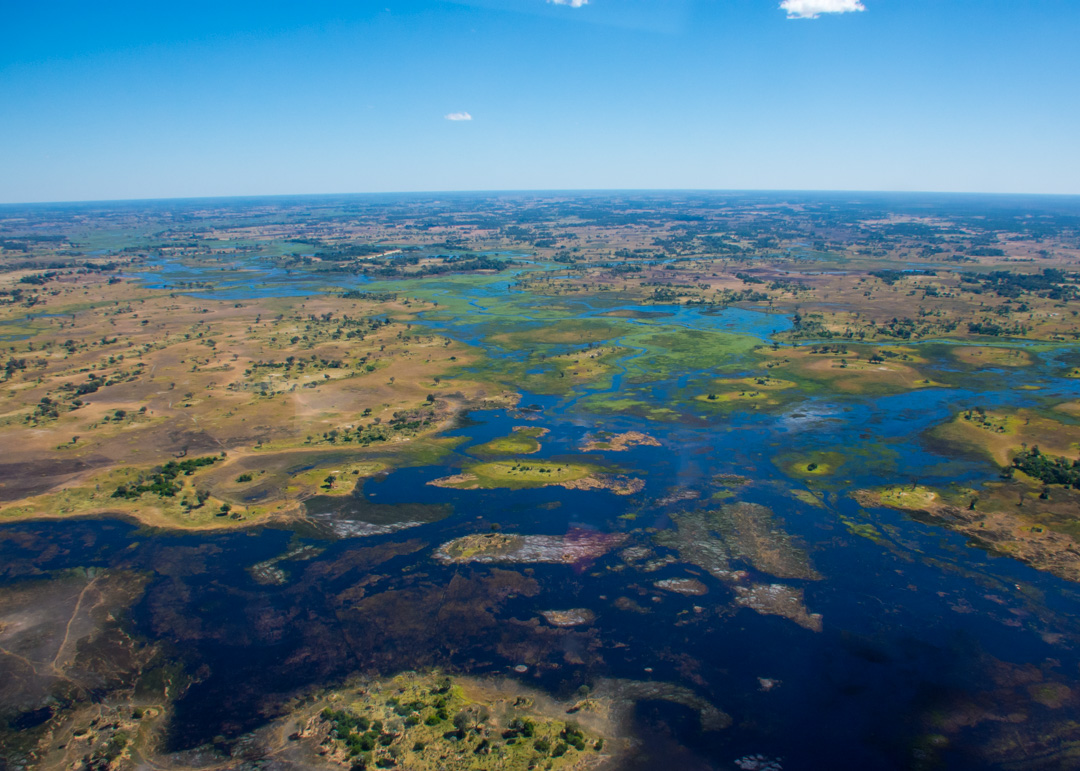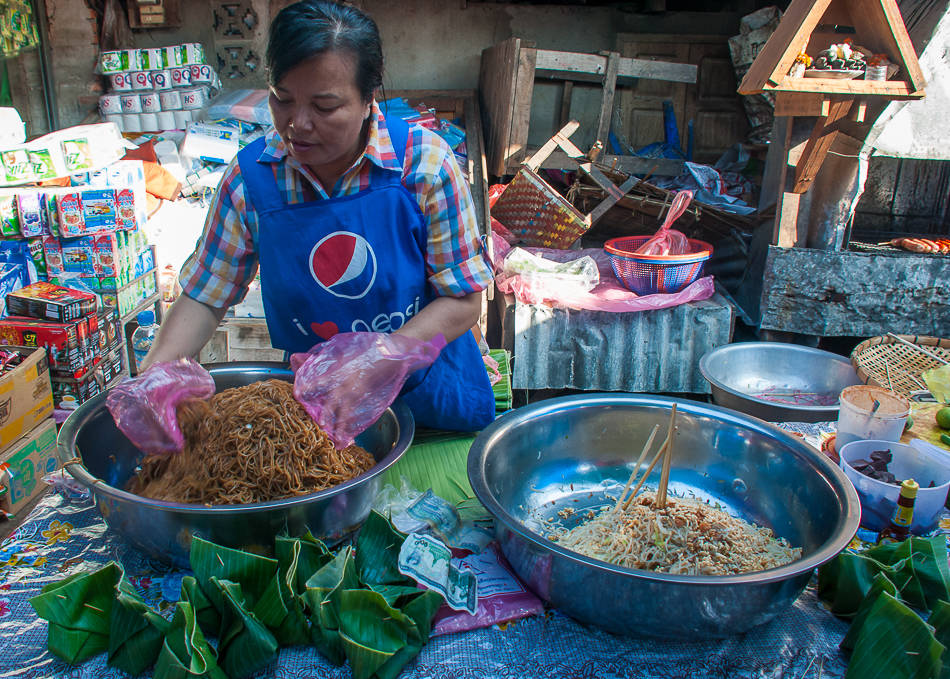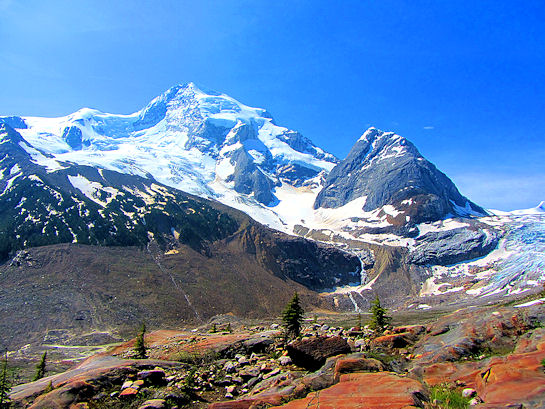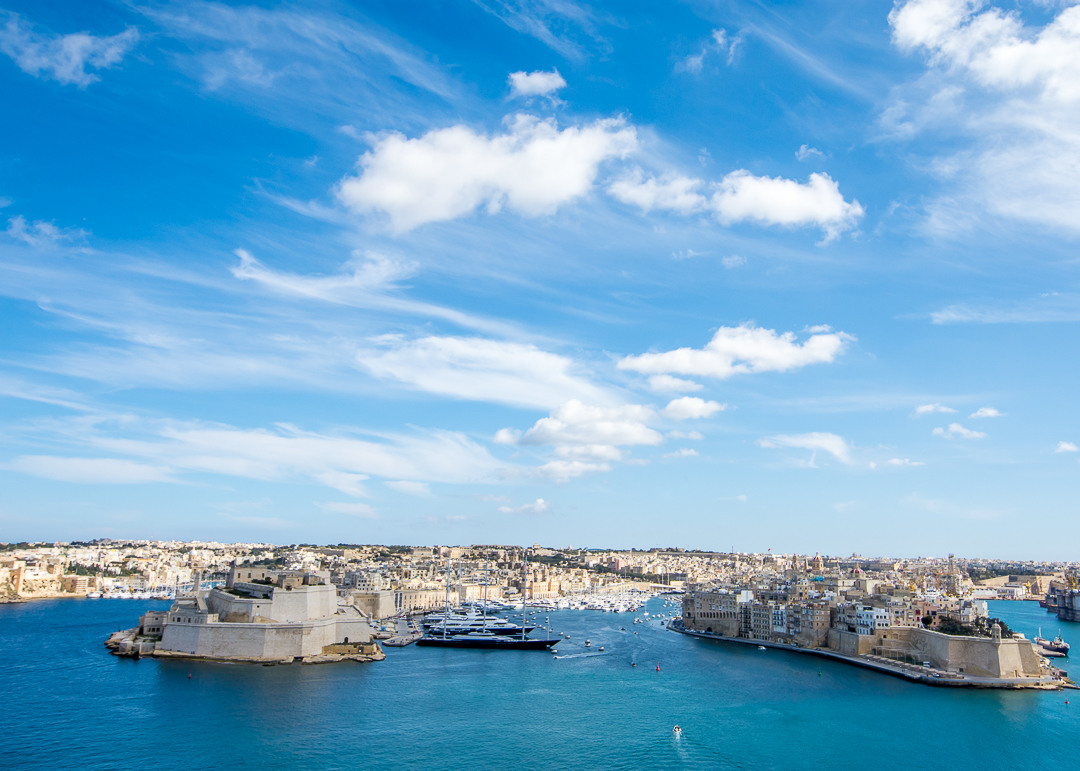After being blown away by the spectacular wildlife in the Okavango Delta at Sandibe Safari Lodge, I was now getting deeper into its blue-green wilderness. The flood waters coming all the way from Angola were reaching their peak, creating a beautiful water system and a host of safari activities unseen anywhere else.
A 45 min ride from the airstrip brought me to the Xaranna Camp, a secluded tented camp set on an island and only accessible by boat this time of year.
The light and airy camp takes its inspiration from the water lily and sits in the middle of a permanent lagoon teeming with hippos (which you can hear at all time of day and night).
It’s the perfect place to enjoy luxurious solitude and a well-deserved change of pace as everything here is conducive to relaxation.
The huge tents overlook the lagoon and have a modern and soothing décor, light greens and pinks channeling the aquatic flower.
A deep bathtub and the usual indoor/outdoor shower scream pampering and you’ll have plenty of time to indulge in both.
In addition, a plunge pool large enough to do mini-laps is waiting to cool you off on your private terrace – there’s definitely enough water around these parts!
I was used by now to frequent visitors of all kinds when staying in a wildlife area and Xaranna was no exception. A family of kudus made daily visits to feed on my apparently delicious waterfront property and seemed almost oblivious to my presence.
So handsome…and these spectacular corkscrew horns! Not surprising they’re highly prized in Africa, to be used as musical instruments or symbolic ritual objects.
Females don’t sport the same panache and are much smaller.
Some will even venture into the communal dining areas and it’s a sight so natural you almost expect them to lay down and keep you company…
As with all my stays at an &Beyond lodge, the food was delicious and plentiful, and for once I had all the time to linger over my meal, read a book, and take in the idyllic surroundings in total piece and quiet.
It included staring at this male impala for a while, happily grazing near the dock.
While I could have been perfectly happy whiling the afternoon hours away on this charming little island, there are quite a few activities available for you to do and quite a large swap of land to explore. Xaranna enjoys, just like Sandibe, a pristine private reserve covering over 60,000 acres and has both land and water-based game viewing available. We started with the land game drive, one I was now used to, and as luck would have it spotted lions within minutes of starting to drive.
We were extremely blessed as big game viewing is pretty rare around these parts, the high water levels having kept most of them out towards drier reserves like Sandibe. The tall grass also wasn’t very peeking-friendly but we still managed to observe the cubs for a little while before heading out.
Soon after came the major difference between a safari in the Okavango Delta and one pretty much anywhere else – water channel crossing. I’m not talking here about a few inches of water but a real deep river we had to cross, multiple times I have to say.
Lifting our feet, the water was rushing right underneath our seats as we safely and excitedly reached the other shore. In a few weeks this road will be completely submerged and impossible to get through, hence why there are a few made-up bridges in different parts of the reserve to allow some limited game drives during peak flooding season.
Wildlife was pretty sparse as we had been warned and a sighting of a single giraffe was the highlight of the next hour. You could drive for a while without spotting anything and on such a large piece of land it can get a little monotonous.
Consolation price – I finally got a semi-decent shot of a warthog.
As we drove further away, the smell of smoke became omnipresent and I remembered seeing large curtains of smoke when flying over here.
The sad reality of human-induced bush fires, often caused by a smouldering cigarette, was in plain view. Although they can be fairly common during the dry season, they’re nevertheless a painful sight to witness.
A Tsessebe was almost indistinguishable from afar, its dark coat acting as camouflage amidst the burning landscape.
Usually stunning zebras in their stark white and black attire were rolling themselves in the ashes, thereby protecting their skin against the sun and insects…
Water birds are probably the most numerous group we came across, both on land and on the water, and I was thrilled to see again the impressive saddle-billed stork.
Even more exciting was the sighting of the endangered wattled crane, one of the largest and most elegant of Botswana’s birds.
A very familiar resident, I wonder if it was the same kudu that visited my ‘backyard’ a few hours ago?
Ubiquitous to the African landscape, the tall spire-like structures of the termites’ mounds are nevertheless impressive, rising above everything else in the flat savannah.
Stopping for our sundowner and with little wildlife to observe, it was a great opportunity to notice not only the mounds but the tall, half-barren trees all around, glowing in the magical hour.
Crossing the river at sunset…
The next morning was a real treat as for the first time that week we didn’t have to wake up at 5:30am for a morning game drive. This left us with plenty of time to enjoy the first few sun rays on the terrace, a total luxury.
Breakfast could be had on the ‘beach’ around the fire where a steaming pot of oatmeal was simmering.
Fresh fruits, pastries, cereals and yogurt were ready for the early risers as well.
And for a truly decadent first meal, you were welcome to have your eggs and the view all at once, wondering how you were going to leave this place the next day…
Snakes made regular appearances, and thankfully this one was harmless (common bush snake).
Another common sight around any camps in Africa – cheeky monkeys.
Totally unafraid of us, they would make a dash for any food left for the shortest amount of time out of sight.
Lazy mornings here are perfectly complemented by what is perhaps the most tranquil of any safari activities – a mokoro ride. The Okavango Delta is one of the few places where you can indulge in a water-based safari and enjoy a different side of wildlife spotting. The serene feeling of being poled through the placid waters in a traditional dugout canoe (which has become an iconic symbol of the Delta) is one you shouldn’t go home without experiencing.
If you were thinking about spotting lions drinking from the shore, while it would be pretty cool it’s not exactly what the mokoro will show you. It’s more about slowly gliding inches above water in the narrow waterways and getting up close with the flora and fauna, mostly all on the smallish side. No better examples than these extremely loud and infinitesimally small reed frogs which require squinting of the eyes before getting into focus.
Smaller than my thumb, reed frogs are another proof of nature’s playing tricks. Their diminutive shape is not at all indicative of the loud symphony they’re saluting the setting sun with each day, trust me!
Despite not having burned many calories during this quiet morning, vacations dictate an endless amount of food coming your way so we consumed a large lunch following the mokoro ride.
Clearly one to make the most of a particularly hedonistic day, I sneaked in a massage on my private terrace (!) before proceeding with the afternoon activities. It’s in a blissful state that I embarked on another water safari, this time on board a motorboat cruising the expansive papyrus-lined channels.
The views from that vantage point and reflections on the water were priceless.
The speed of the motorboat obviously gives you more opportunities to spot wildlife along the shores, albeit with a bit more noise than in a mokoro. We were fortunate to see a herd of red lechwe, elegant rust-red antelopes feeding of the delta’s wetlands.
An unmissable elephant was also nearby.
Harder to spot but no less abundant, hippos clearly enjoy the deep channels and are a very vocal inhabitant of the delta (yes, they kept me up at night for several hours…part of the charm of sleeping in the wild!).
A solitary cape buffalo was standing belly-deep in the water, munching on semi-aquatic grass.
We kept on exploring the various channels until the golden hour which turned the previously bright-blue water reflections into a deeper palette and called for the usual safari tradition, this time with a twist. Yes, sundowners are also part of a boat safari and what a delightful surprise it was to spot a laid out bar on the shore of one of the islands with a bartender waving at us…was this real life? 😉
We drank and chatted until the glorious sunset brought out the only inhabitants we could have done without – swarm of biting mosquitoes. There was no avoiding the buggers seeing as we were standing in the middle of a gigantic swamp at sun down. It’s with a scarf covering my face that we sped through the clouds of uninvited guests, leaving a trail of cadavers behind (and on my scarf) as I bade farewell to the magnificent Okavango Delta.



























































